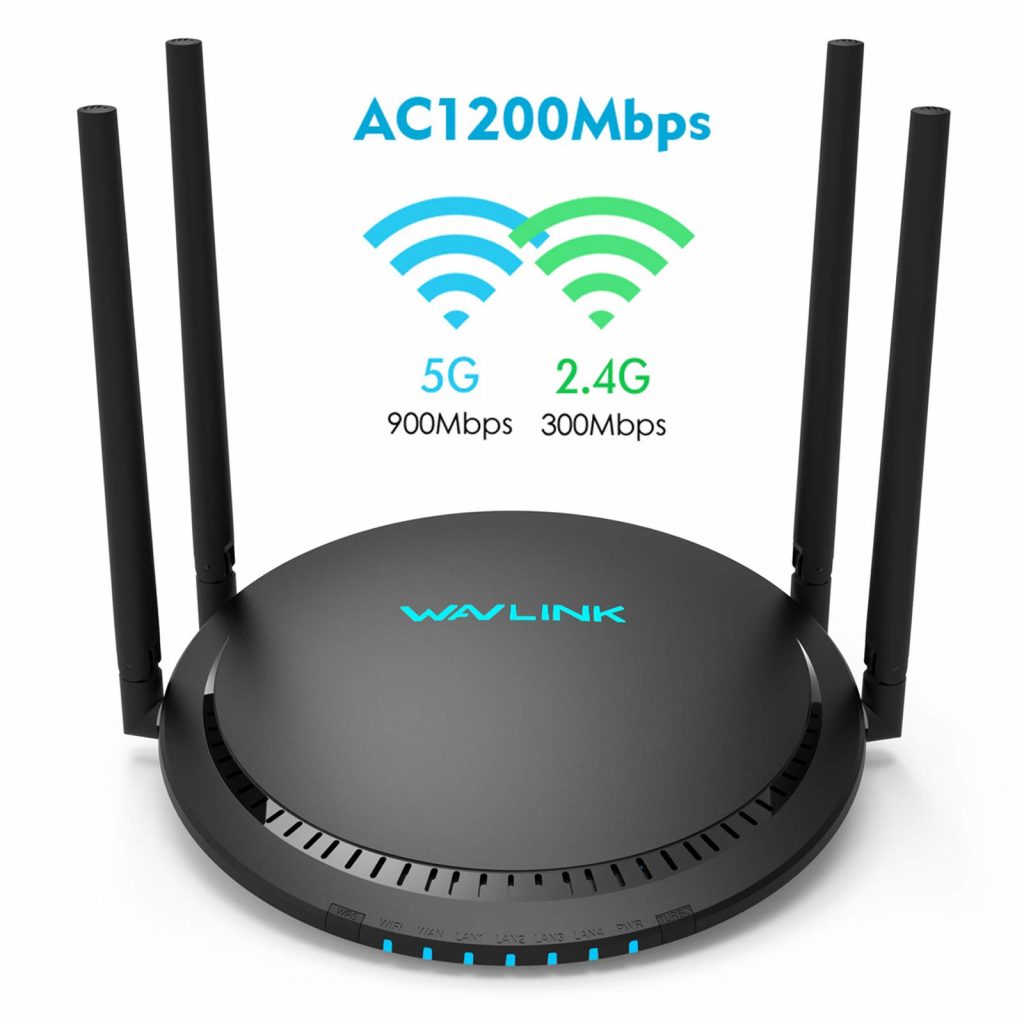Test your current internet speed
Before you get started, test your current internet speed. Use your speed test result as a baseline and compare the results as you go through your journey on reaching a faster internet connection.
SpeedtestWelcome to the world of wireless connectivity!
In this article, we will delve into the concept of dual-band WiFi and explore its meaning, advantages, and implications.
As technology evolves, the demand for faster and more reliable internet connections increases, making it crucial to understand the different aspects of WiFi and how it impacts our daily lives.

Understanding WiFi
Before we dive into dual-band WiFi, let’s establish a foundational understanding of WiFi. WiFi, short for Wireless Fidelity, refers to the technology that enables devices to connect to the internet wirelessly.
It relies on radio waves to transmit data between devices and a wireless router.
Single-Band vs. Dual-Band WiFi
In the world of WiFi, we commonly encounter single-band and dual-band networks.
Single-band WiFi operates on the 2.4 GHz frequency, while dual-band WiFi operates on both 2.4 GHz and 5 GHz frequencies simultaneously.
A. Single-Band WiFi
Single-band WiFi, as the name suggests, operates on a single frequency band. The 2.4 GHz band is more widely used and offers good coverage but can be susceptible to interference from other devices, such as microwaves or cordless phones.
This can lead to slower speeds and reduced reliability.
B. Dual-Band WiFi
Dual-band WiFi, on the other hand, operates on two frequency bands simultaneously, namely 2.4 GHz and 5 GHz.
The 5 GHz band offers faster speeds and lower interference compared to the 2.4 GHz band. Devices that support dual-band WiFi can choose the optimal frequency band based on their capabilities and the network’s conditions.
Exploring Dual-Band WiFi
Dual-band WiFi provides several advantages over single-band WiFi.
Let’s explore them in detail:
A. Improved Performance
By operating on both the 2.4 GHz and 5 GHz bands, dual-band WiFi provides improved performance, especially in crowded areas with multiple devices.
The 5 GHz band offers higher speeds and less interference, allowing for smoother streaming, faster downloads, and better online gaming experiences.
B. Increased Bandwidth
With dual-band WiFi, you can allocate different tasks to different frequency bands.
For example, you can use the 2.4 GHz band for everyday tasks like web browsing and email while reserving the 5 GHz band for bandwidth-intensive activities like streaming 4K videos or transferring large files.
This allocation helps prevent congestion and ensures a seamless internet experience.
C. Flexibility and Compatibility
Dual-band WiFi routers and devices are backward compatible, meaning they can connect to both older single-band WiFi devices operating on the 2.4 GHz band and newer dual-band devices.
This flexibility allows you to enjoy the benefits of dual-band WiFi while ensuring compatibility with a wide range of devices.
Benefits of Dual-Band WiFi
Dual-band WiFi offers numerous benefits to users.
Let’s highlight some of the key advantages:
A. Faster Speeds
With access to the 5 GHz band, dual-band WiFi delivers faster speeds, enabling quicker downloads, smoother streaming, and lag-free online gaming.
This is particularly beneficial for households with multiple users and devices simultaneously accessing the internet.
B. Reduced Interference
The 2.4 GHz band is often crowded with various devices, leading to interference and slower speeds.
Dual-band WiFi utilizes the less congested 5 GHz band, minimizing interference and ensuring a stable connection, even in dense environments.
C. Seamless HD Streaming
The high bandwidth of the 5 GHz band makes dual-band WiFi ideal for streaming high-definition (HD) content.
Whether you’re watching movies, TV shows, or live sports, dual-band WiFi ensures a buffer-free streaming experience with crisp visuals and immersive audio.
D. Enhanced Online Gaming
Gamers thrive on low latency and high-speed internet connections.
Dual-band WiFi’s ability to provide faster speeds and lower interference translates into an improved gaming experience with reduced lag, quicker response times, and seamless multiplayer gameplay.
Setting up Dual-Band WiFi
To fully leverage the benefits of dual-band WiFi, it’s essential to set up your network correctly.
Here’s a step-by-step guide to help you get started:
- Choose a dual-band WiFi router that suits your needs.
- Connect the router to your modem using an Ethernet cable.
- Access the router’s administration panel through a web browser.
- Configure the network settings, including the network name (SSID) and security options (e.g., WPA2-PSK).
- Set up separate names for the 2.4 GHz and 5 GHz bands to differentiate them easily.
- Customize advanced settings based on your preferences, such as Quality of Service (QoS) or guest networks.
- Connect your devices to the appropriate frequency band, ensuring optimal performance.
Common Dual-Band WiFi Devices
Dual-band WiFi is supported by a wide range of devices, including:
- Smartphones and tablets
- Laptops and desktop computers
- Smart TVs and streaming devices
- Gaming consoles
- Smart home devices
- Wireless printers
Troubleshooting Dual-Band WiFi
While dual-band WiFi offers significant advantages, occasional issues may arise.
Here are some common troubleshooting steps to address them:
- Ensure your router’s firmware is up to date.
- Keep your router away from potential sources of interference.
- Check for neighboring networks that might be causing interference.
- Adjust the placement of your router for optimal coverage.
- Use strong and unique passwords to secure your WiFi network.
- Restart your router and devices if connectivity issues persist.
Enhancing Dual-Band WiFi Performance
To enhance your dual-band WiFi performance further, consider implementing the following tips:
- Position your router centrally to ensure maximum coverage.
- Use WiFi range extenders or mesh WiFi systems to expand coverage in larger spaces.
- Optimize your router’s antenna orientation for optimal signal strength.
- Monitor your network for potential bandwidth hogs and prioritize devices or applications using QoS settings.
- Upgrade to a higher-tier internet plan to take full advantage of your dual-band WiFi’s capabilities.
Future of Dual-Band WiFi
As technology advances, the future of dual-band WiFi looks promising.
With the growing demand for faster and more reliable internet connections, dual-band WiFi will continue to play a vital role in meeting these needs.
We can expect further enhancements in wireless speeds, broader coverage, and improved network management features.
Conclusion
In conclusion, dual-band WiFi offers a significant upgrade over traditional single-band WiFi.
By operating on both the 2.4 GHz and 5 GHz frequency bands, dual-band WiFi provides improved performance, faster speeds, reduced interference, and enhanced compatibility.
It is an ideal solution for households and businesses seeking seamless internet connectivity for streaming, gaming, and everyday online activities.
Now is the time to embrace the benefits of dual-band WiFi and unlock a world of fast and reliable wireless connectivity.
FAQs
Can all devices connect to dual-band WiFi?
Yes, most modern devices are compatible with dual-band WiFi. However, it’s essential to check the specifications of your device to ensure it supports the 5 GHz frequency band.
Can I use both frequency bands simultaneously?
Yes, you can use both frequency bands simultaneously on a dual-band WiFi network. This allows for better device allocation and optimal performance based on the specific tasks and bandwidth requirements.
Do I need a special router for dual-band WiFi?
Yes, you need a dual-band WiFi router that supports both the 2.4 GHz and 5 GHz frequency bands. These routers are readily available in the market and offer various features to enhance your wireless experience.
Can I switch between the 2.4 GHz and 5 GHz bands manually?
Yes, most devices allow you to manually switch between the 2.4 GHz and 5 GHz bands. This flexibility allows you to choose the appropriate frequency band based on your specific needs and network conditions.
How can I optimize my dual-band WiFi network for gaming?
To optimize your dual-band WiFi network for gaming, ensure that your gaming device is connected to the 5 GHz band. Additionally, consider using Quality of Service (QoS) settings to prioritize gaming traffic and minimize latency.

The visionary founder behind SpeedtestGo, an innovative platform dedicated to helping users measure and optimize their internet speed. With a deep-rooted love for technology and a mission to empower individuals with reliable internet connections, Shawn has created a remarkable space where users can test their internet speed and gain valuable insights and information through engaging blog content.








